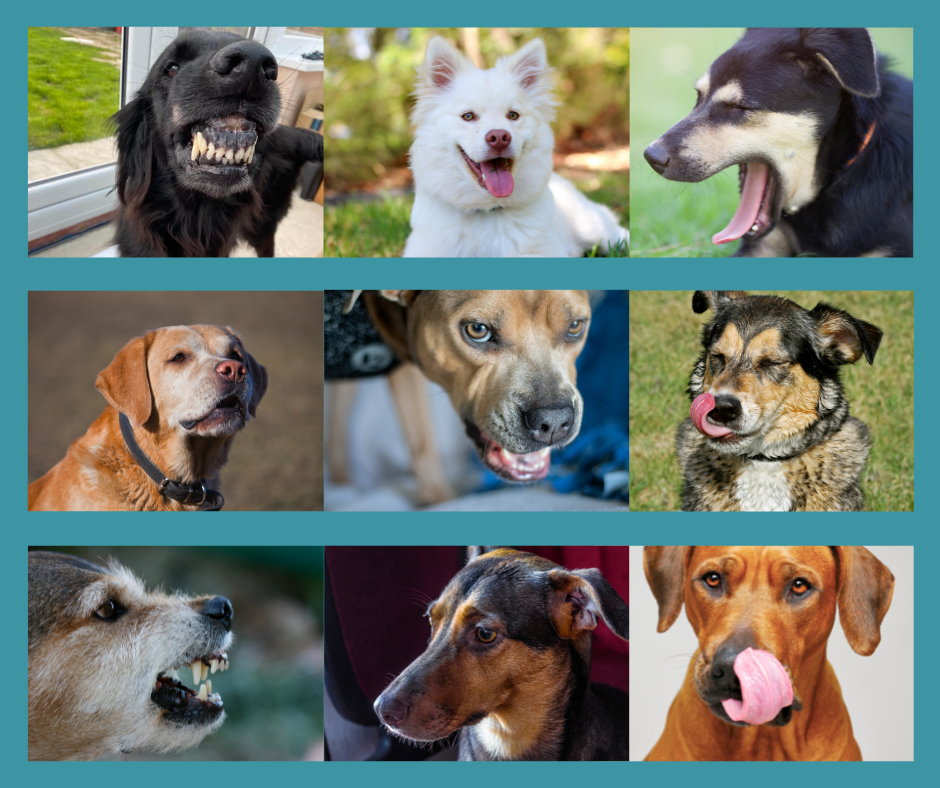A lot of how we can read canine body language is looking at the mouth. From yawning to growling, the mouth is very expressive, not to mention it’s the end that can do the most damage! Here are some common emotions that can be expressed through your dogs mouth positions.
Open mouth
A relaxed/happy dog often has an open mouth, with the tips of the canine teeth visible and the tongue relaxed.
Lip & Tongue Position
- A stressed/anxious/worried dog can often see them close their mouth. Under high stress the commissures (corners of a dog’s mouth) can be pulled back tightly and stretched.
- Panting out of context can indicate stress or anxiety.
- A ‘spatulate tongue’ is when the mouth is open and tongue out, but the tongue is elongated and wider at the bottom and may curl up. This indicates the dog is stressed.
- Lip licking can be a flick of the tongue or a more obvious lip lick. It is a great indicator that a dog is worried or uncertain, avoiding something or given as an early warning.
- A dog being threatening or aggressive may have a closed mouth or tight face with the commissures forward. They may wrinkle the muzzle and expose teeth in a snarl or growl.
Smiling
Smiling is often described as a ‘submissive grin’. It can look scary at first, but once you look at the rest of the body, you will notice a softness in the eyes and the dog will often be wiggly, with their ears back and soft eyes. Sometimes dogs can smile when they are fearful or stressed. Their body may cower, look away and ears flattened.
Yawning
Your dog may yawn when they have just woken up or tired, but sometimes yawns happen outside of these situations and are actually part of dog communication. The yawn can be a calming signal, showing that the dog is feeling uncomfortable with a situation, a tension release or it can be a sign of stress. You may see yawns when your dog is at the vets for example (and it’s not because they are bored). Yawns are often accompanied by a head turn or look away.

It’s important to read the dog’s whole body and not just one part. Also take into consideration the context in which the behaviour is happening.
Learn more about your dog’s body language with our other articles in the body language series.
Understanding Your Dog’s Body Language – Ears
Understanding Your Dog’s Body Language – Eyes
Understanding Your Dog’s Body Language – Tail
Understanding Your Dog’s Body Language – Body Positions
